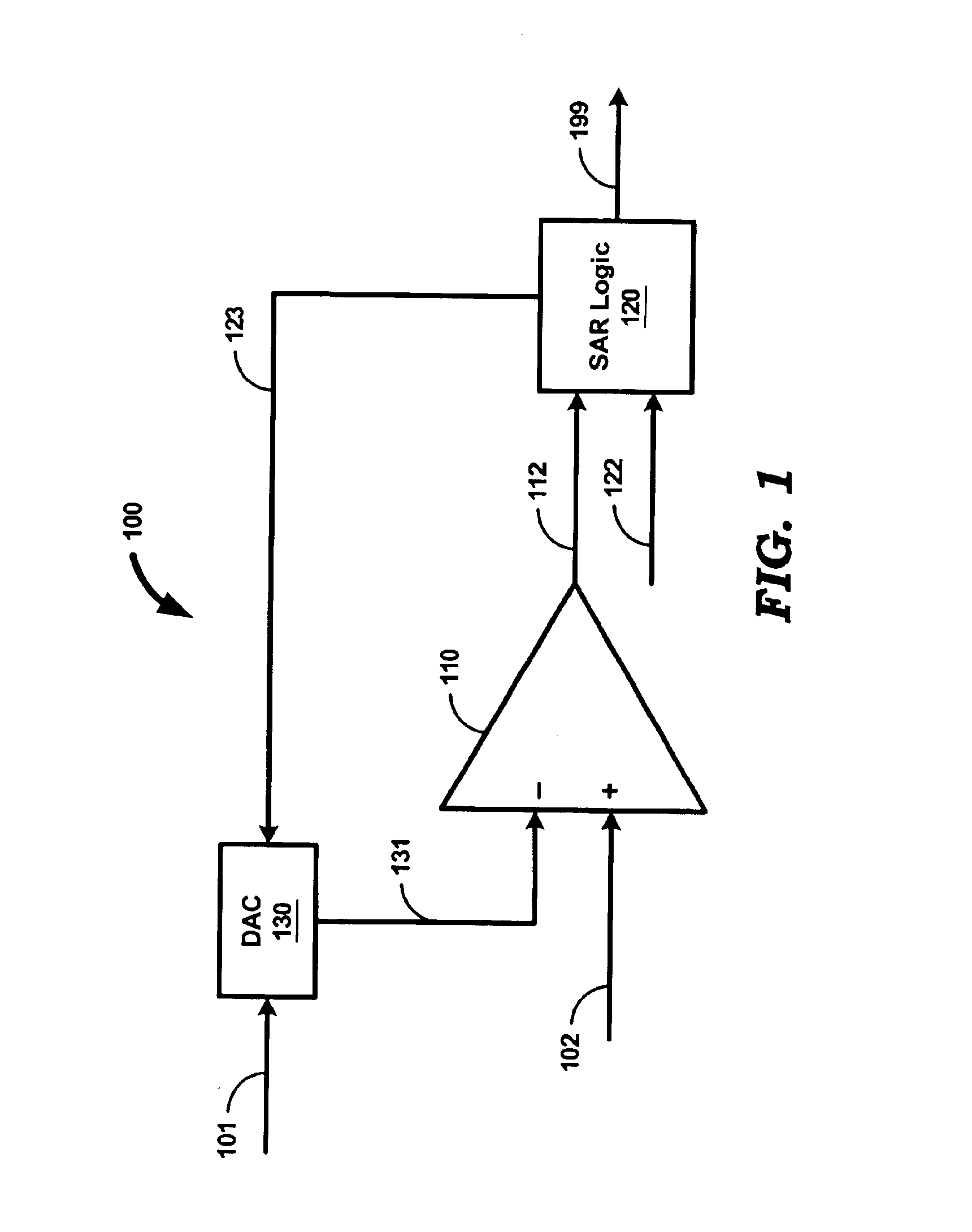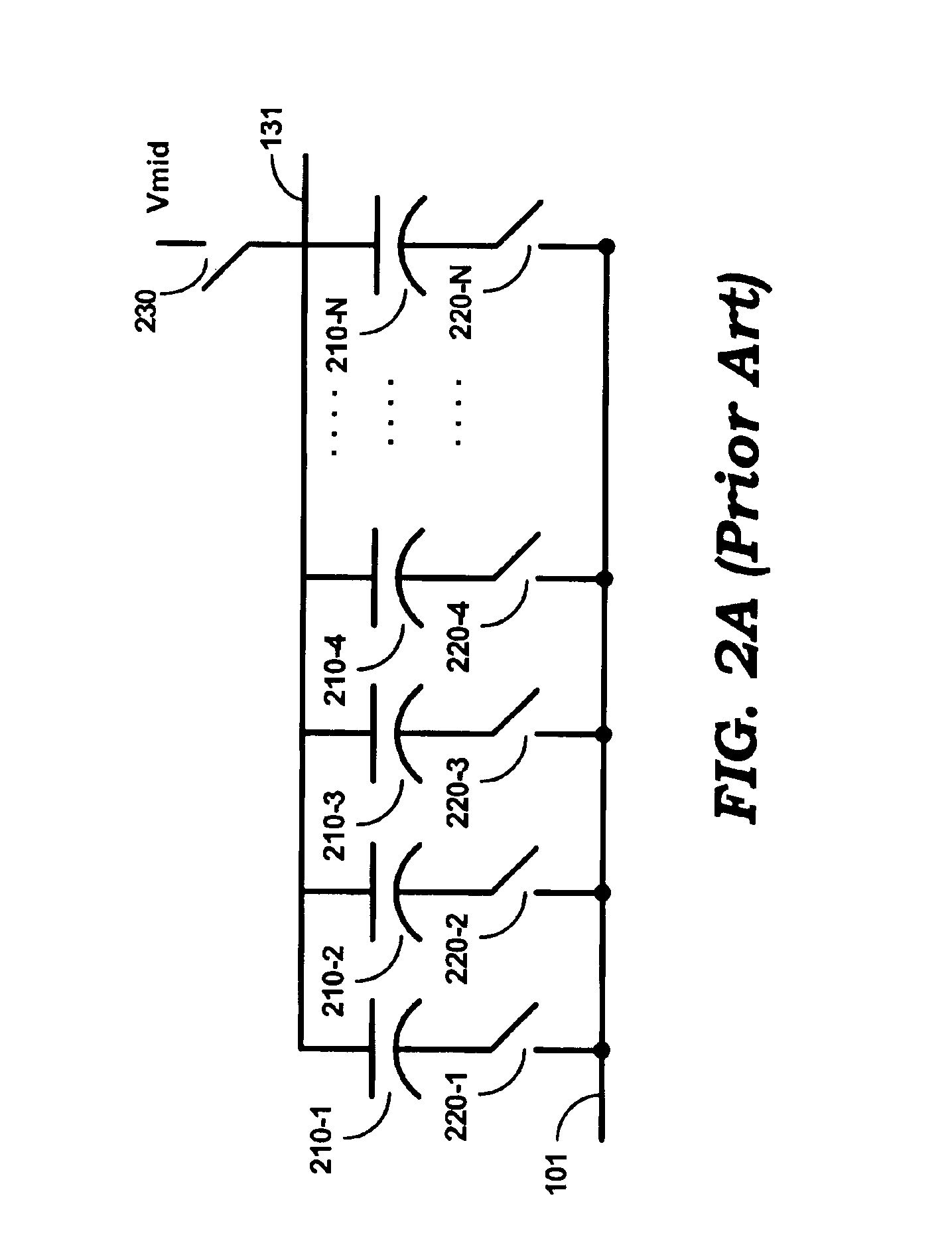Increasing the SNR of successive approximation type ADCs without compromising throughput performance substantially
a technology of signal to noise ratio and adc, which is applied in the field of digital converters, can solve the problems of reducing throughput performance, reducing the snr of the adc, and reducing the snr of the adc, so as to achieve the effect of enhancing the signal-to-noise ratio (snr), reducing the snr of the adc, and reducing the snr of the ad
- Summary
- Abstract
- Description
- Claims
- Application Information
AI Technical Summary
Benefits of technology
Problems solved by technology
Method used
Image
Examples
Embodiment Construction
1. Overview
[0027]An aspect of the present invention improves the SNR of a SAR ADC while reducing the decrease in throughput performance (compared to prior approach(es) noted in sections above). In an embodiment, the SAR ADC converts a sample of an analog signal into an N-bit digital code. The ADC then generates multiple P-bit codes (wherein P is less than N) sampling a difference of the voltages represented by the sample of the analog signal and the N-bit digital code. The ADC determines an accurate digital code by averaging the multiple P-bit codes and adding the resulting average to the N-bit digital code. In addition, the average may also be used to correct the N-bit digital code in either positive and negative directions.
[0028]As may be readily appreciated, averaging would increase the SNR of the ADC, and using only P-bit codes (rather than N-bit codes) would reduce the decrease in throughput performance. Thus, ADCs providing high SNR as well as high throughput performance may b...
PUM
 Login to View More
Login to View More Abstract
Description
Claims
Application Information
 Login to View More
Login to View More - R&D
- Intellectual Property
- Life Sciences
- Materials
- Tech Scout
- Unparalleled Data Quality
- Higher Quality Content
- 60% Fewer Hallucinations
Browse by: Latest US Patents, China's latest patents, Technical Efficacy Thesaurus, Application Domain, Technology Topic, Popular Technical Reports.
© 2025 PatSnap. All rights reserved.Legal|Privacy policy|Modern Slavery Act Transparency Statement|Sitemap|About US| Contact US: help@patsnap.com



